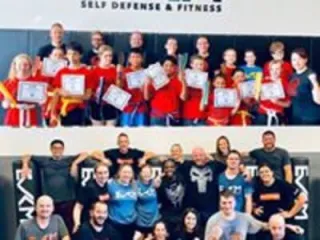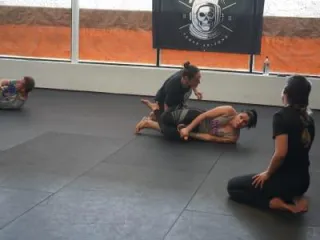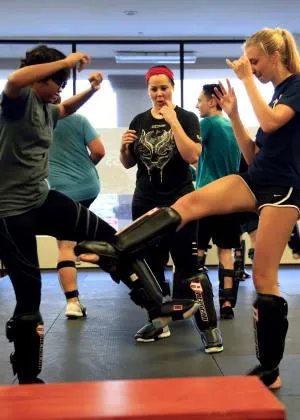
BLOG | EVKM SELF DEFENSE & FITNESS

REQUEST MORE INFORMATION
By providing your number you consent to receive marketing/promotional/notification messages from EVKM Self Defense & Fitness. Opt-out anytime by replying STOP. Msg & Data rates may apply.
FREE WOMEN'S SELF DEFENSE SEMINAR AT EVKM FOR SEXUAL ASSAULT AWARENESS MONTH
April is Sexual Assault Awareness Month (SAAM) and to help raise awareness and education ...more
Martial Arts
April 22, 2024•1 min read

ARIZONA STATE UNIVERSITY SELF DEFENSE PRESENTATION
This week, EVKM's Chief Instructor was invited back to Arizona State University for a presentation on "Self Defense at Any Age" ...more
Martial Arts
April 22, 2024•1 min read

KRAV MAGA LEVEL TESTS IN TEMPE
Both our adult and youth programs had level tests recently! ...more
Martial Arts
April 22, 2024•1 min read

KRAV MAGA BLACK BELTS AT EVKM
EVKM now has 5 black belts on the instructor staff! Recently EVKM Instructors Sara and Keith tested for and received their Krav Maga black belts! ...more
Martial Arts
April 22, 2024•1 min read

HOW TO MAKE THE MOST OF YOUR MARTIAL ARTS CLASS TIME
How to Make The Most of Your Martial Arts Class Time ...more
Martial Arts
April 22, 2024•3 min read

HOW THE NEGATIVITY BIAS DERAILS YOUR GOALS
Post by EVKM Chief Instructor Derrek Hofrichter ...more
Martial Arts
April 20, 2024•4 min read

INJURY PREVENTION: SHIN SPLINTS EDITION
While not a common Krav Maga or self defense training-related injury, shin splints can still affect your ...more
Martial Arts
April 20, 2024•0 min read

NEW LEVEL 4 KRAV MAGA INSTRUCTORS
Recently EVKM Instructors Ivvette and Sara completed and passed their Level 4 Krav Maga Instructor Certifications! ...more
Martial Arts
April 20, 2024•0 min read

Request More Information


Copyright © 2024 - Designed by Zen Planner
| Privacy Policy | Terms of Service